Neuroangio.org believes that size matters less and less. Both giant and tiny blister aneurysms, previously very challenging, with treatments frequently complex and morbid, are now treatable with flow diversion — see Pipeline page and Internal Carotid Artery and Its Aneurysms page. Ruptured blisters are now routinely cured with Pipeline, although this message still needs to be spread. However, coiling technology has also continued to improve, making quiet, slow and overall tremendous progress. Tiny, extremely soft coils are now available to attack equally tiny aneurysms with increasing safety and efficacy.
SAH, classic filling of the suprasellar cistern, a bit of hydro
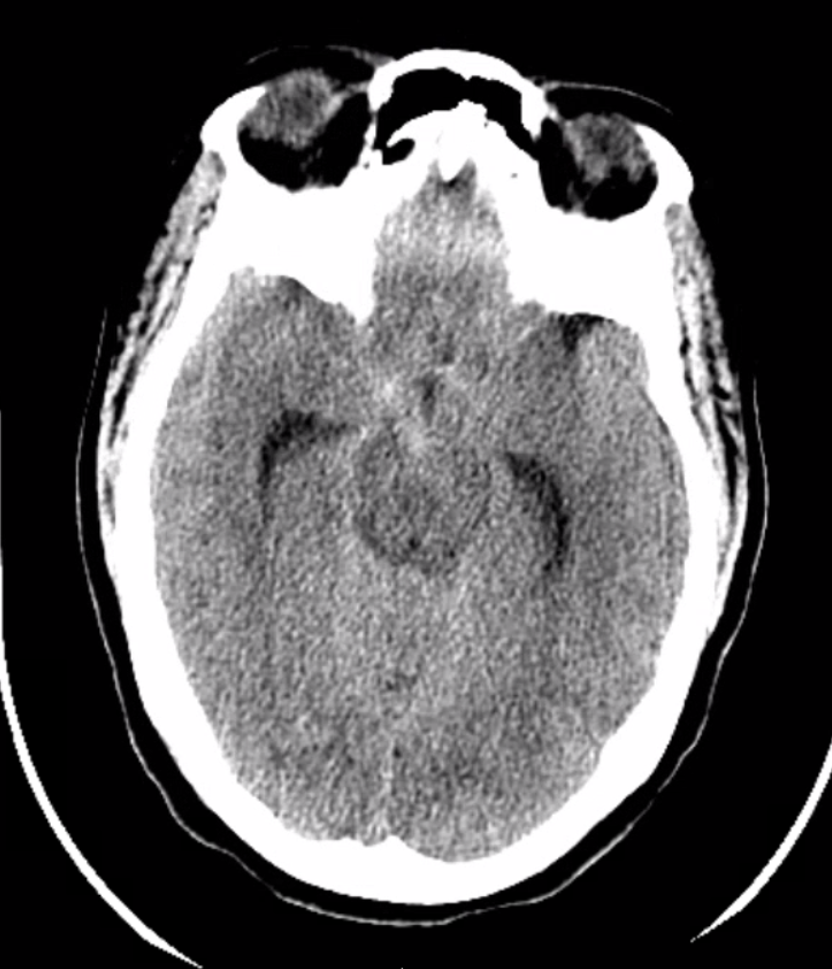
CTA suggests small ACOM aneurysm
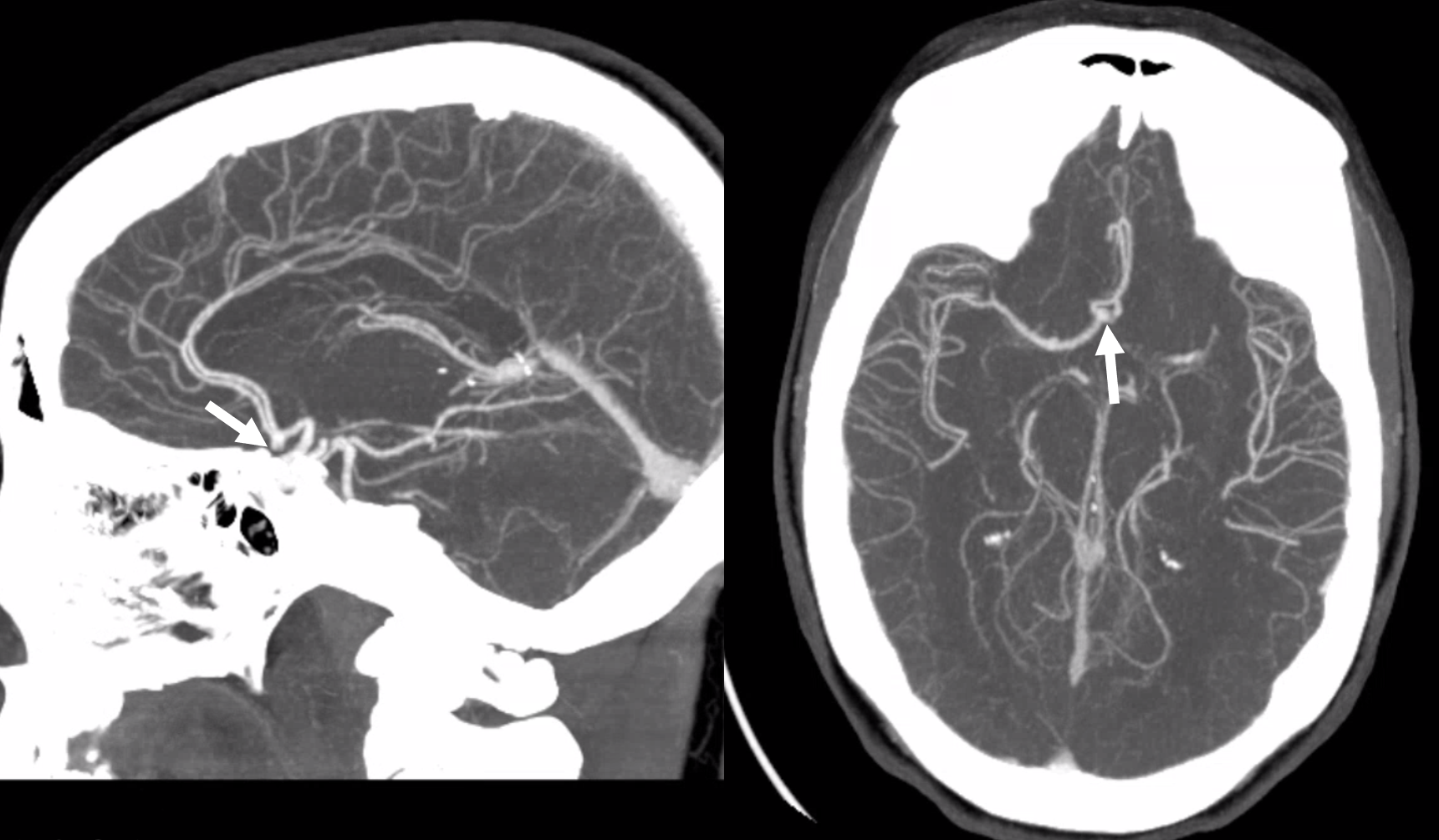
Standard angio views are not impressive
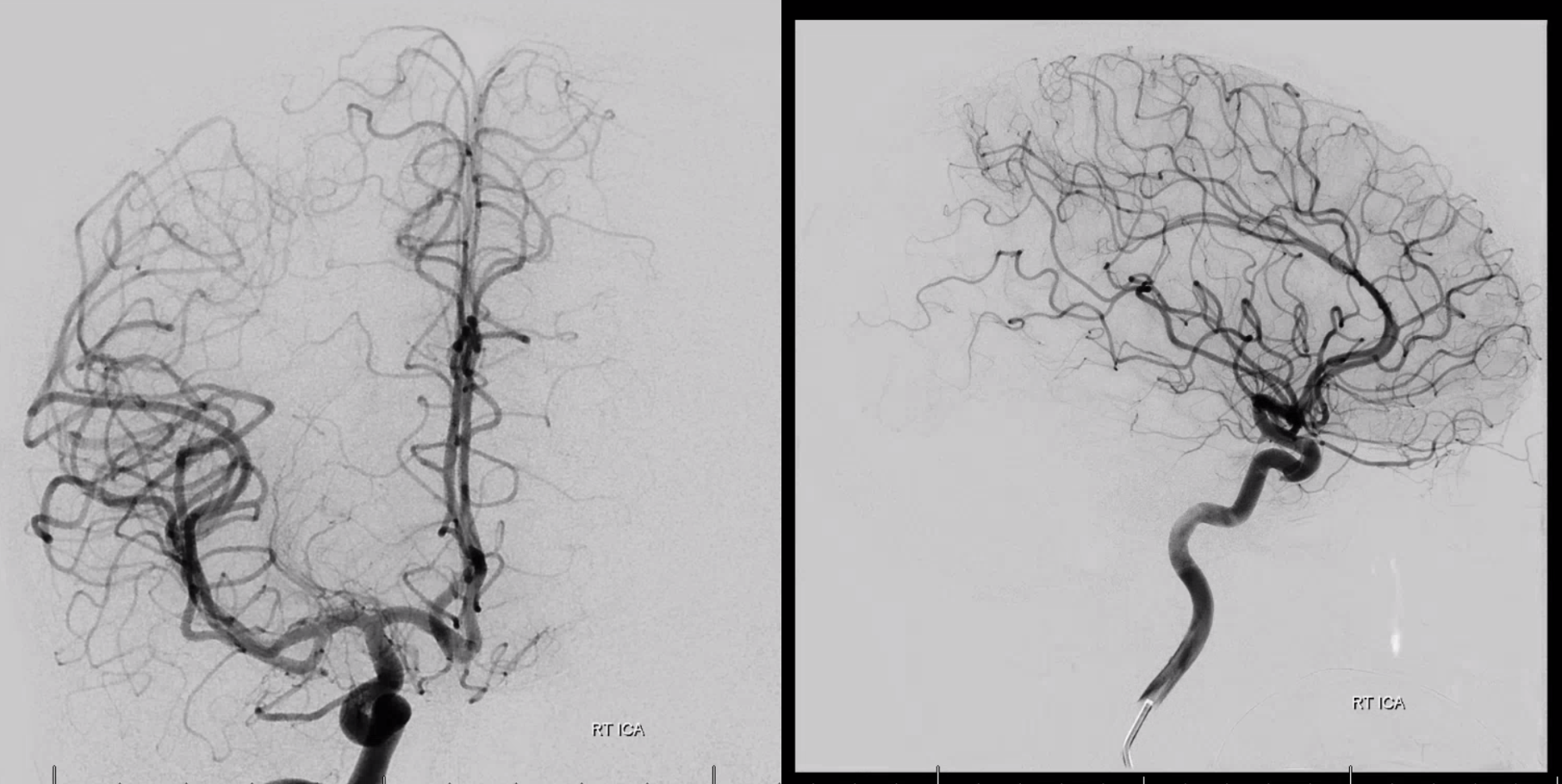
Volume rendered frontal view of rotational angiography
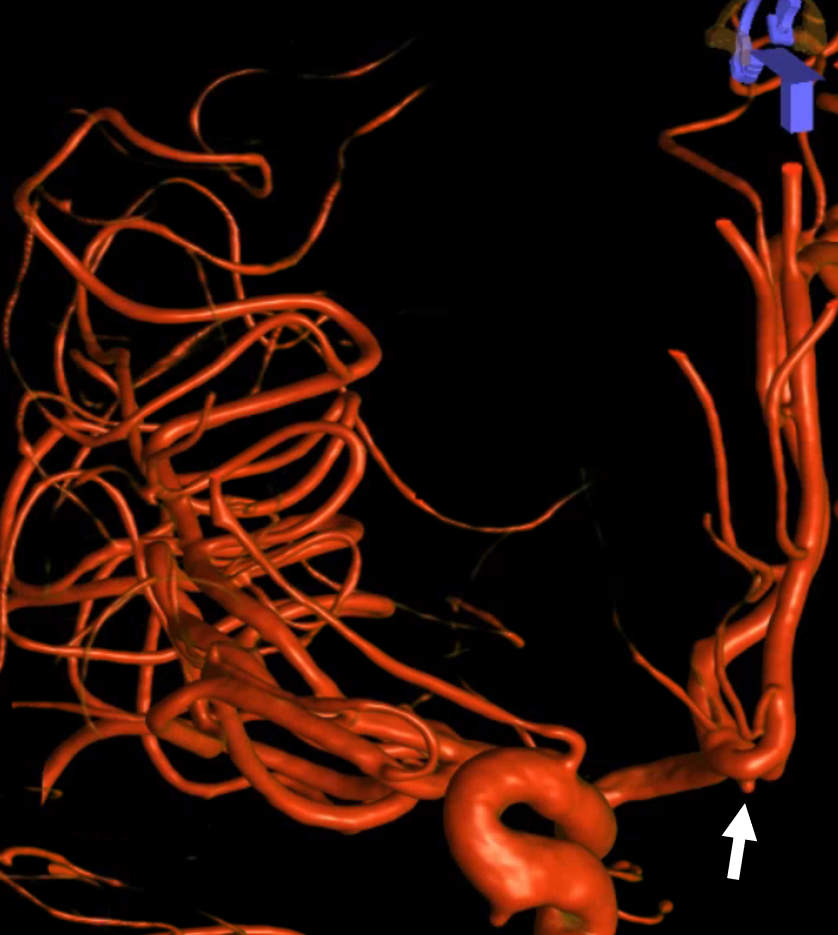
Additional VR and and translucent reconstructions demonstrate an ACOM fenestration (dashed arrows) with a very small aneurysm projecting along the direction of A1 flow vector, sitting between the two fenestration limbs. Translucent views can be particularly helpful here.
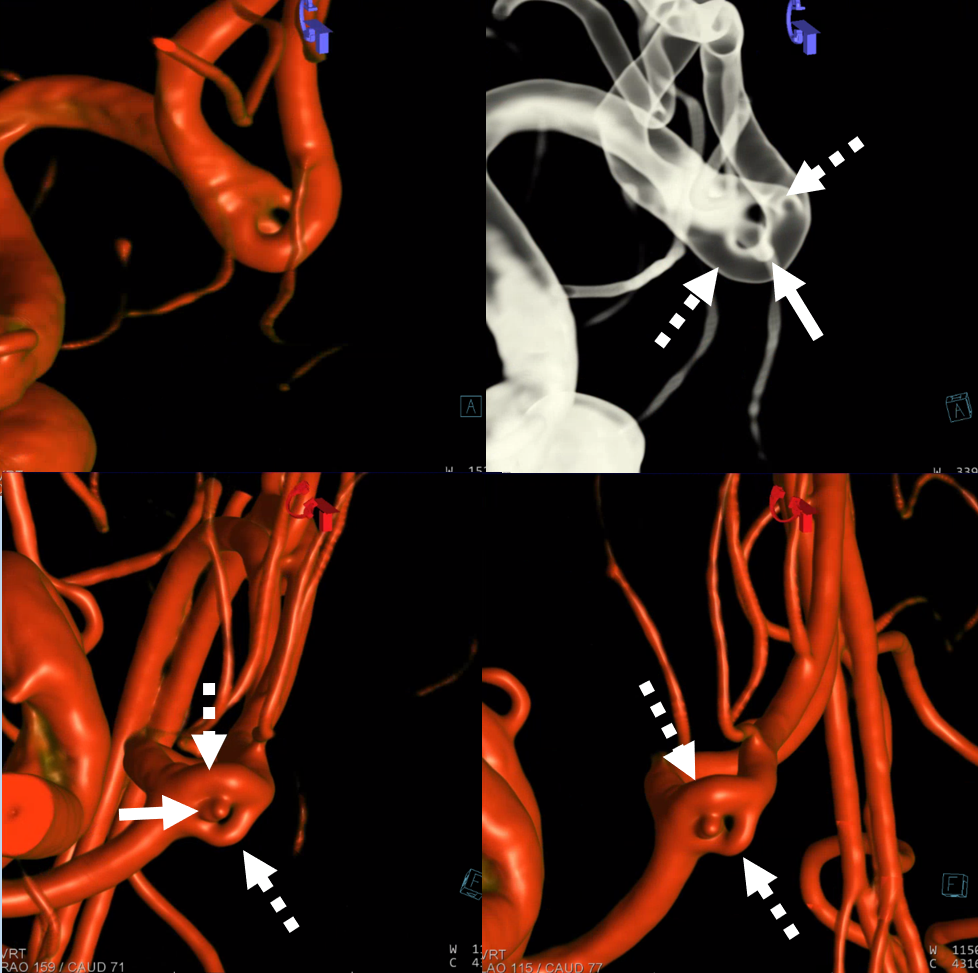
A magnified view shows what appears to be a tiny aneurysm (arrow) and a secondary pseudoaneurysmal sac at point of rupture (arrowhead). This kind of imaging resolution is a relatively recent development
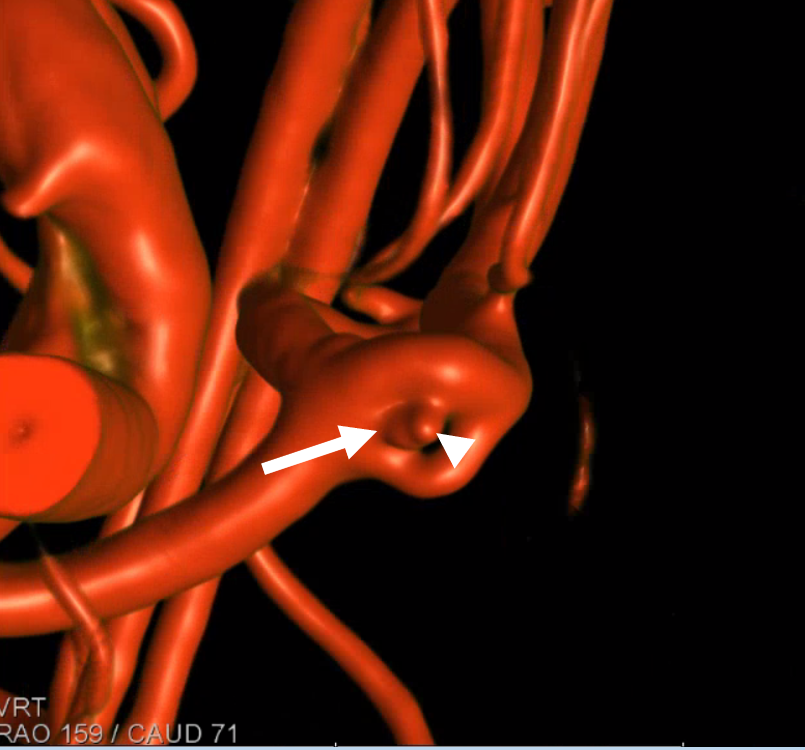
We want confirmation of aneurysm presence by DSA
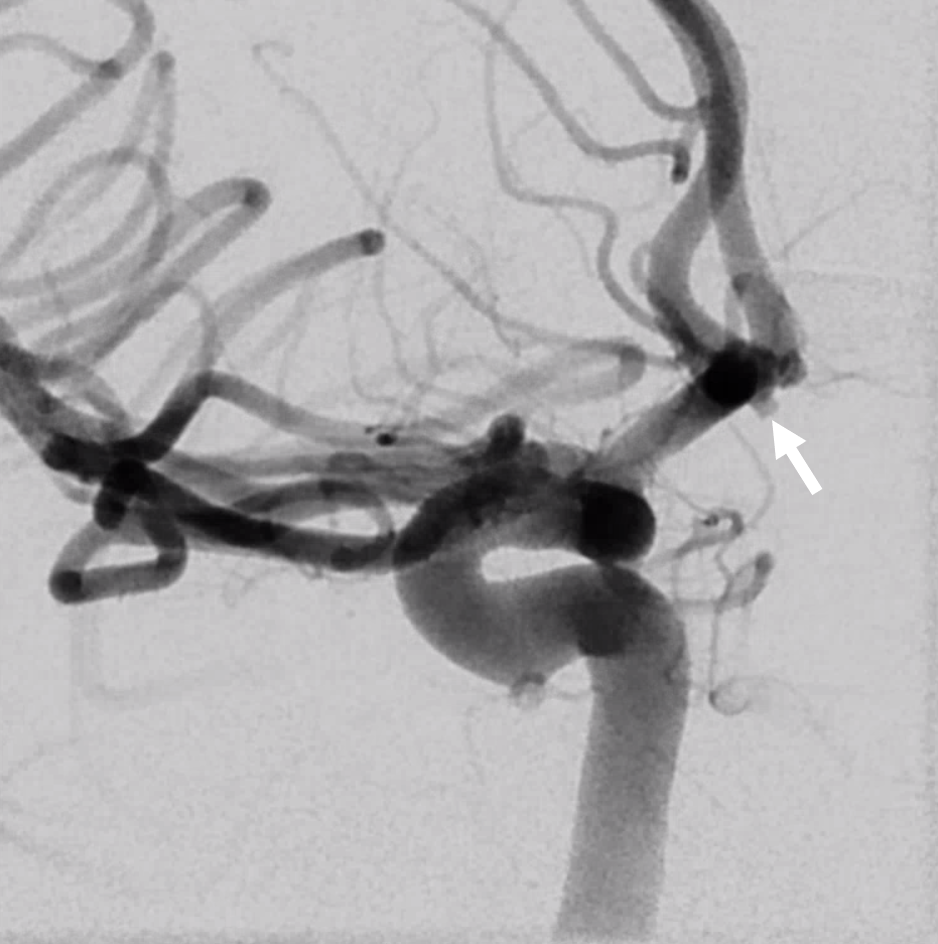
This left anterior oblique Townes like view places the aneurysm between the two fenestration limbs
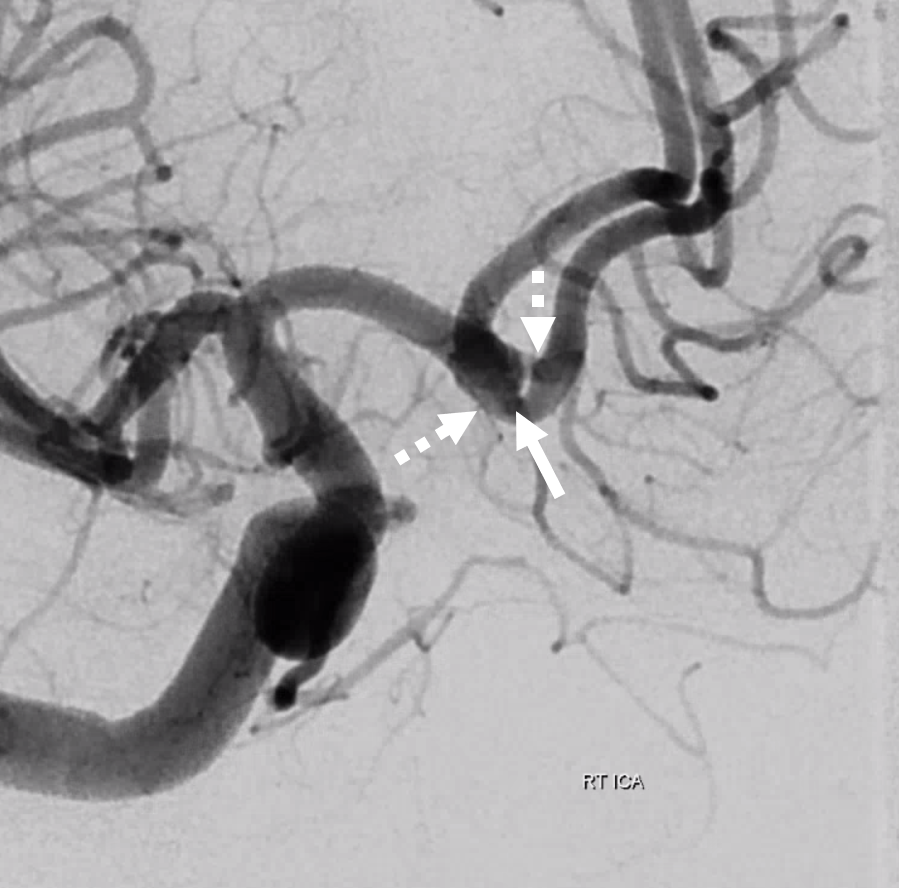
Working projections
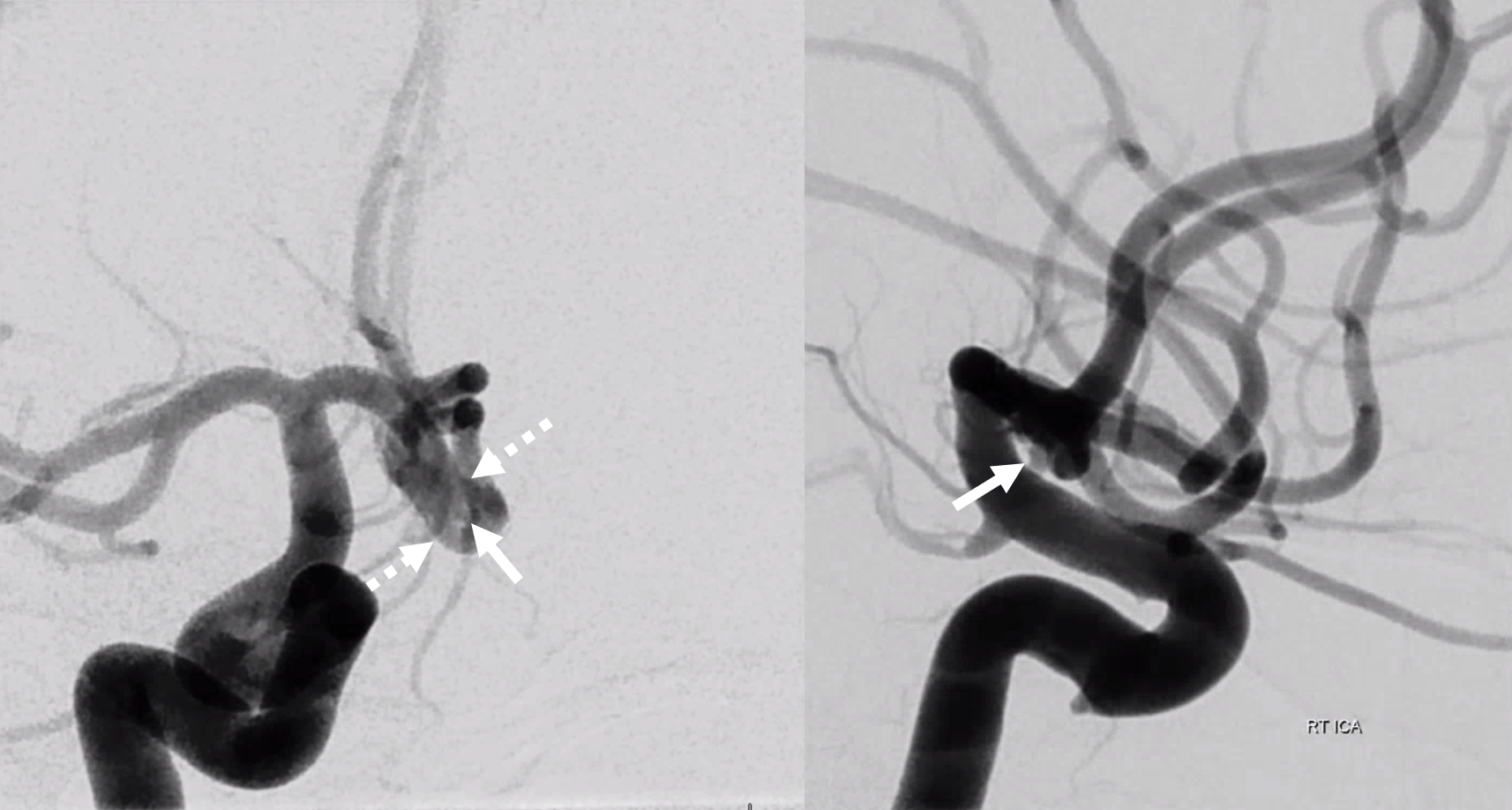
A 3×5 Transform balloon is floated into the A1 segment for proximal control, and an SL-10 45 degree microcatheter fortunately displays a spontaneous affinity for the aneurysm
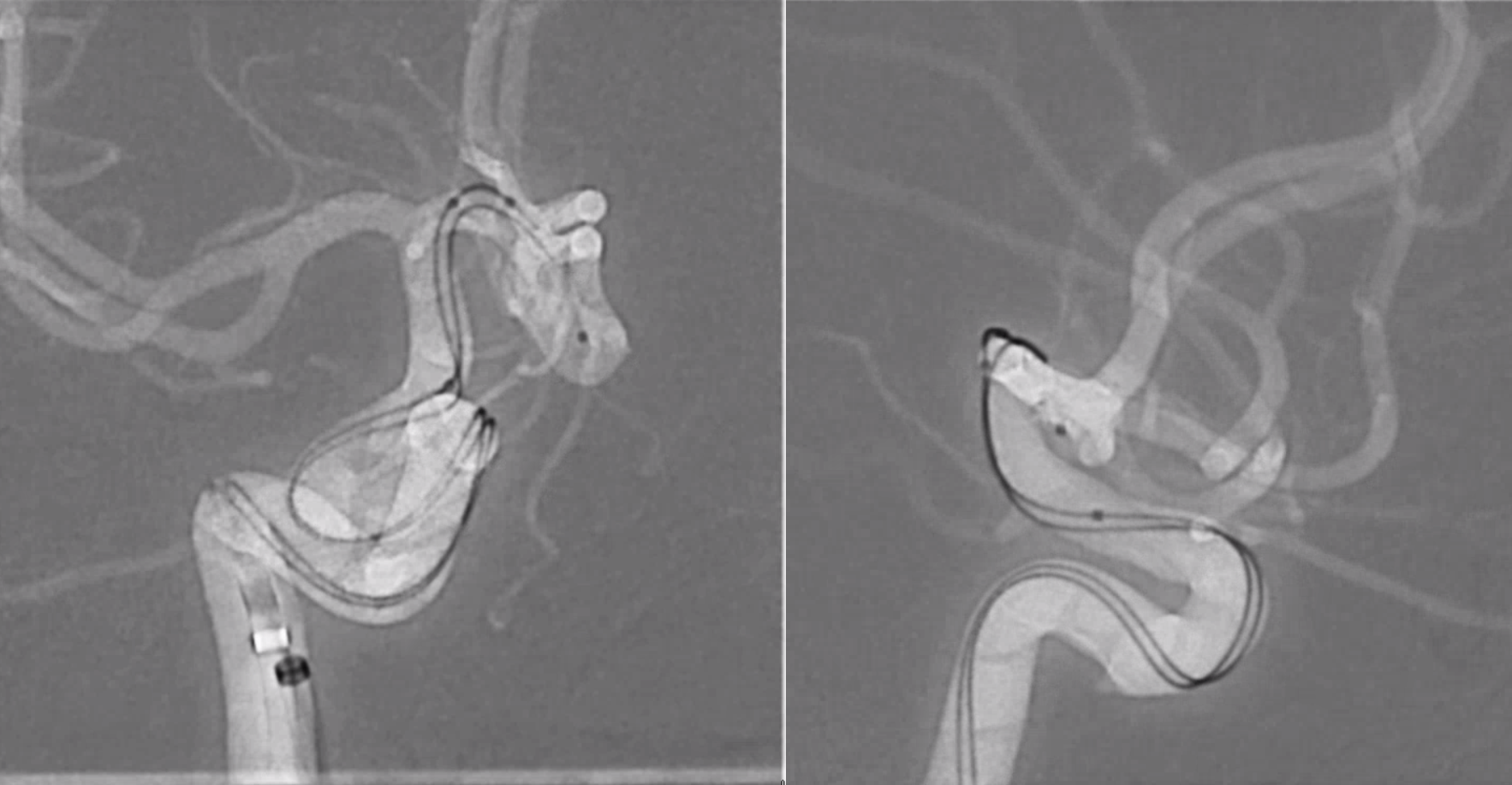
A single 1×2 Helical Nano Target coil is deployed (a 1×1 nano proved to small and was replaced by the 1×2)
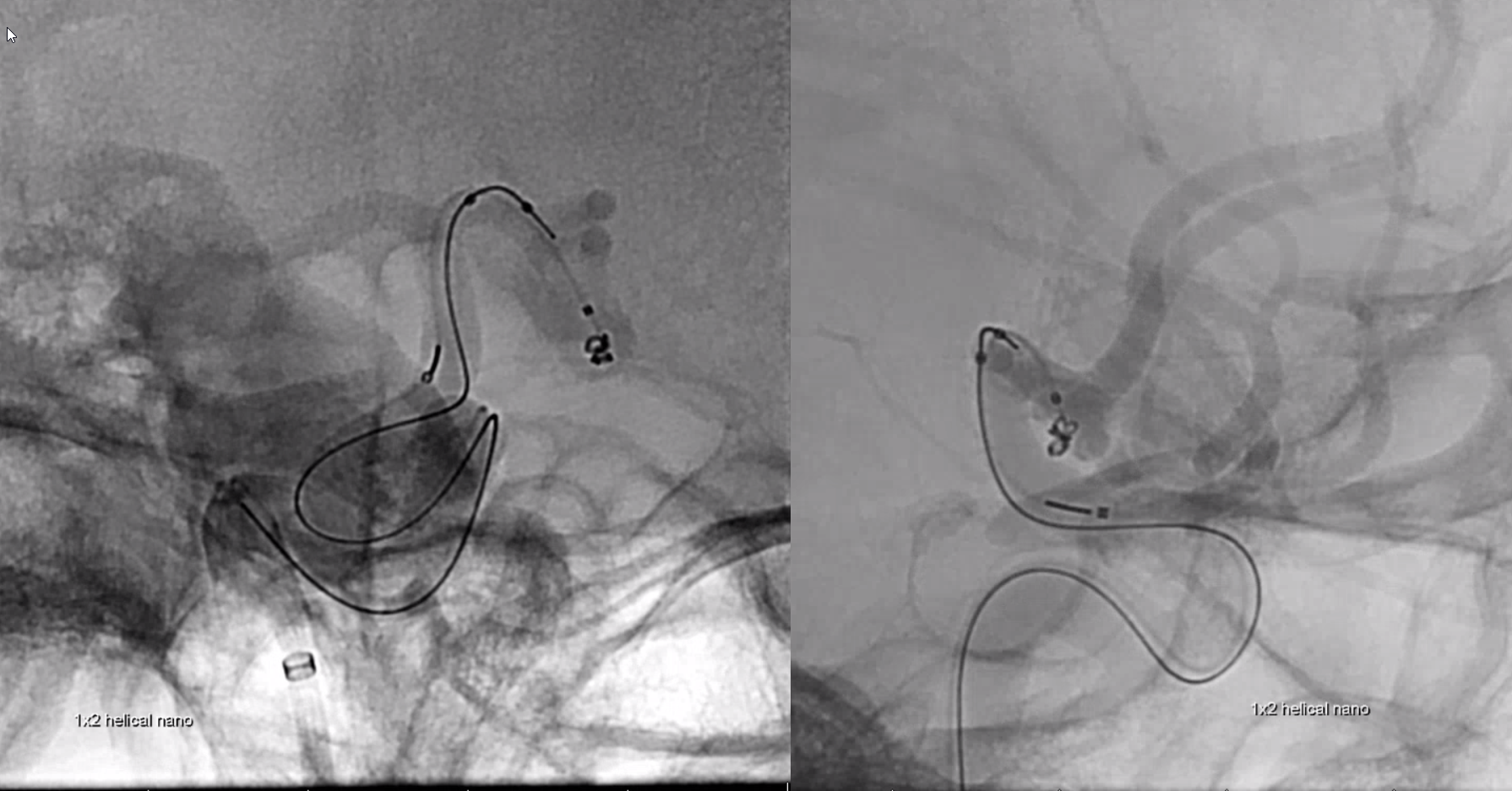
Rotational/3D DSA is acquired prior to coil detachment to verify optimal coil position given tiny aneurysm size — measured at 0.8 x 1.5 mm
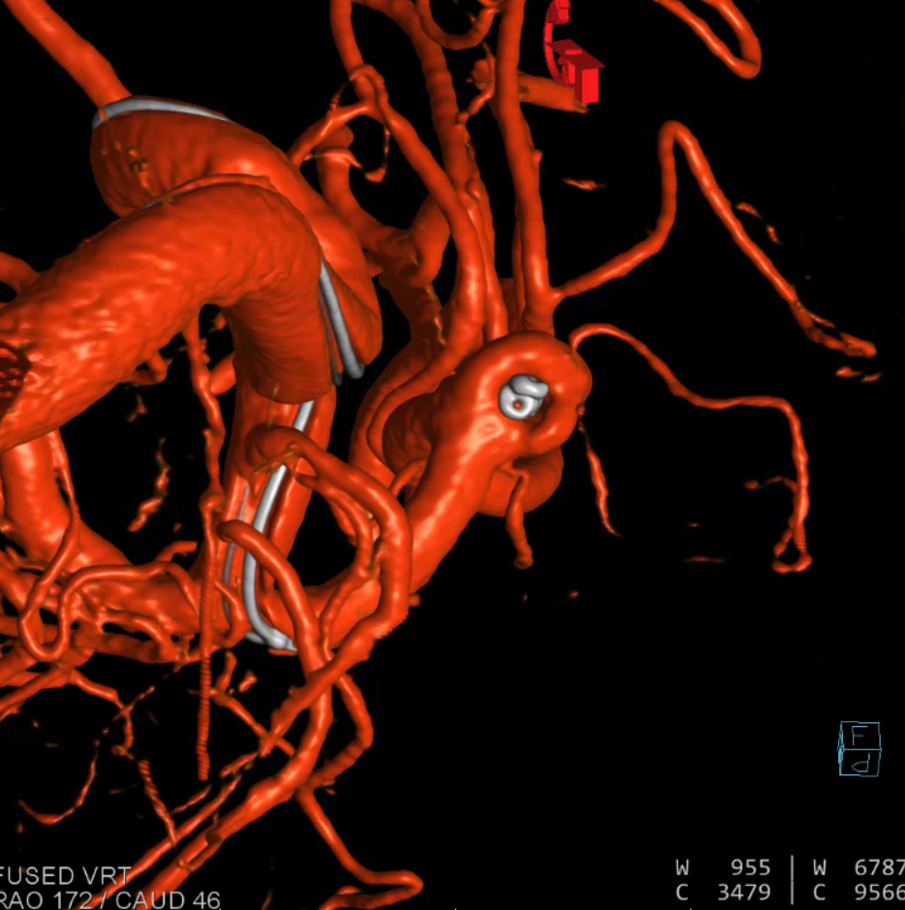
Detached. The 1×1 helical nano we first placed and removed would not fit now
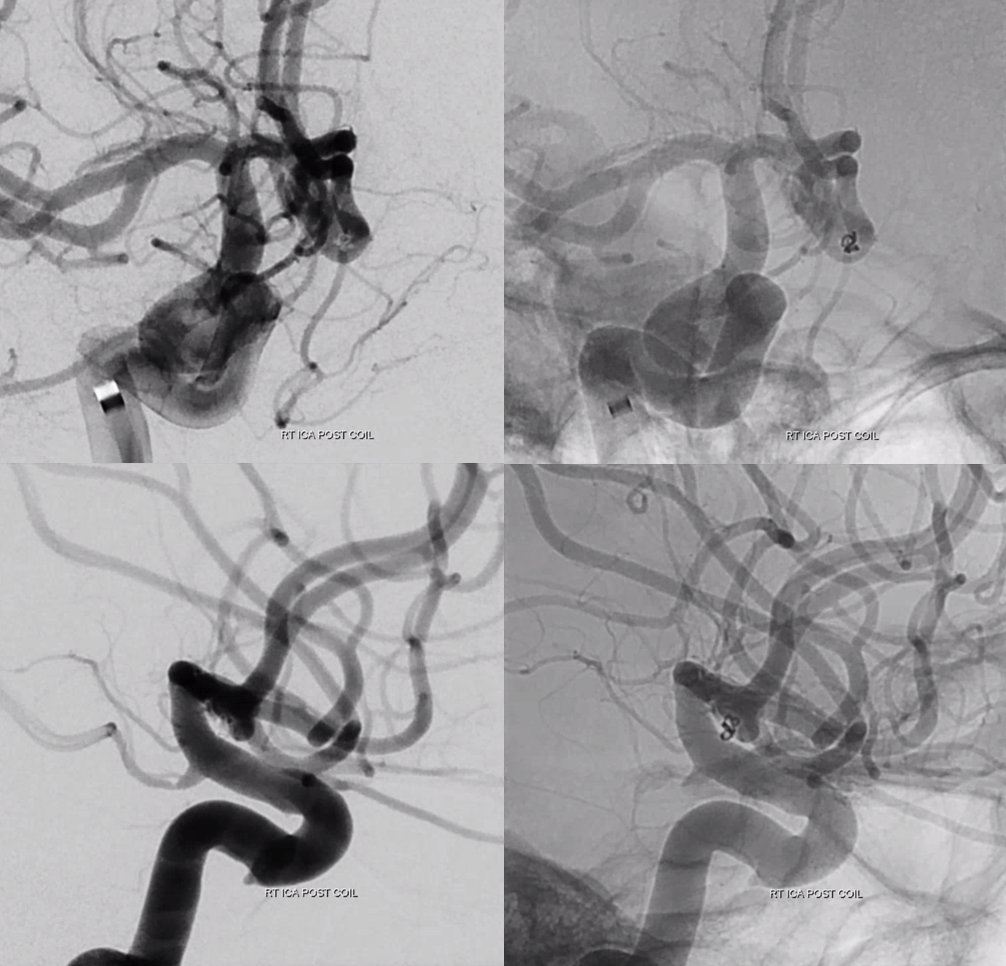
A third and final rotational/3D DSA
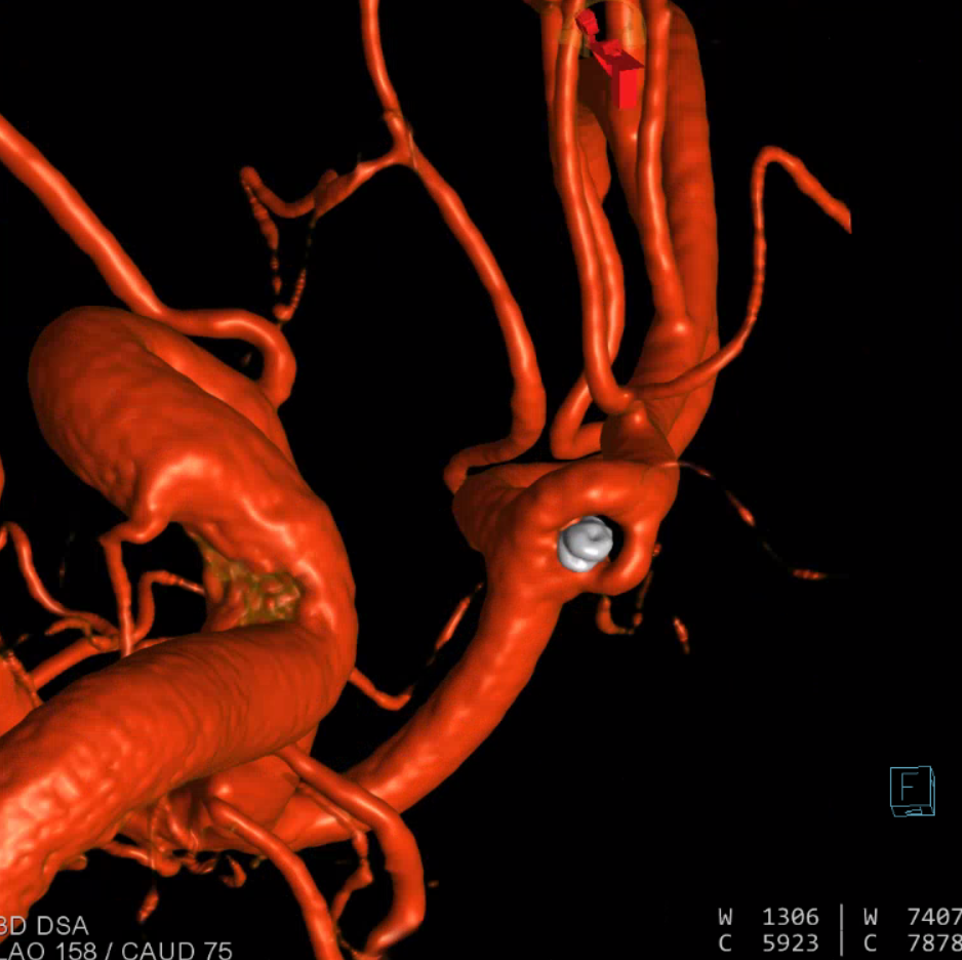
Final frontal
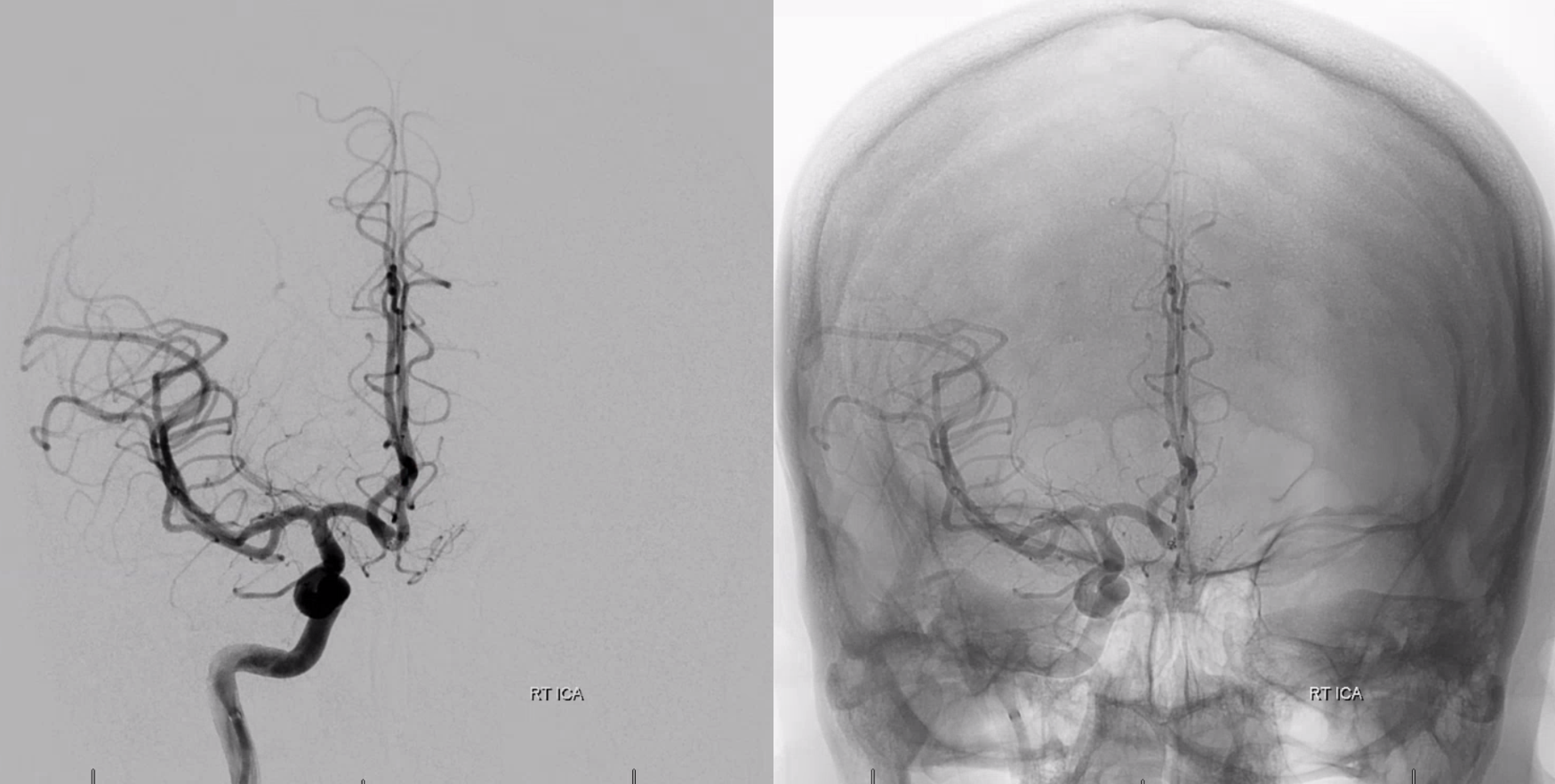
Question: Is this now an ISAT kind of aneurysm? We believe so. And technology will only make this even safer in the future.
See companion case of Tiny SCA Aneurysm Coiling
